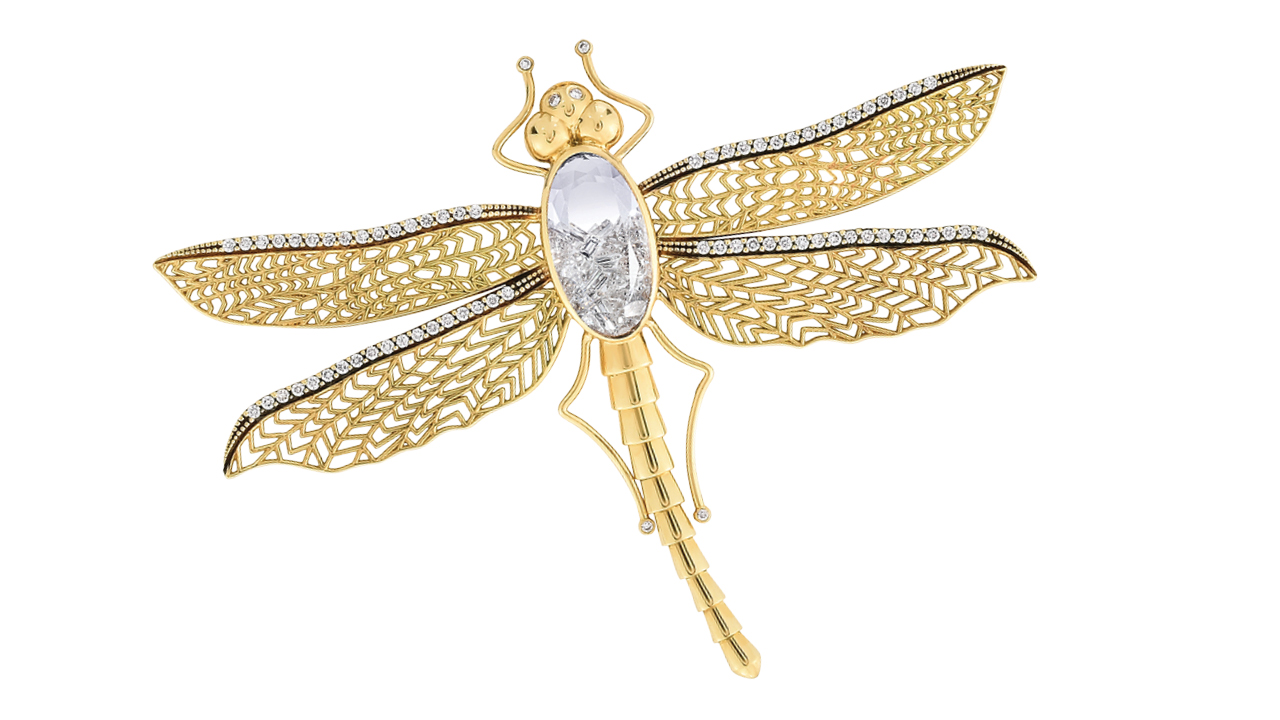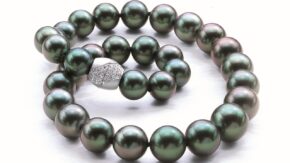Packing several styles into one piece, convertible jewelry morphs to fit the wearer’s life or mood.
Today’s women expect more from their jewelry than just beautiful design. They want it to reflect their individuality, have built-in versatility, and be ready to go at any time. That’s why consumers are drawn to pieces that create multiple looks with just a few quick maneuvers.
Whether designers are using the term “modular,” “convertible” or “transformable” to describe these multifunctional marvels, they are some of the most effortlessly elegant jewels we are seeing today. For those who want to get out of the house with as little fuss as possible, or just to simplify their jewelry choices, these versatile items can be just the ticket.
Modular and modern
The concept has been around in the jewelry world for centuries, but a growing number of independent designers are riding the wave of pieces that transform from studs to long, linear earrings, or from diadems to chokers to lariats. Some are crafting jackets to take earrings and rings up a notch, while others create five or six looks in one, depending on the technology and their aesthetic.
“A style that can transform into different looks guarantees that customers wear the piece more often,” explains Vishal Kothari, founder and creative director of Mumbai-based VAK Jewellery. “This encourages clients to shop for pieces that have both style and financial value.”
VAK’s earrings, like many transformable collections, can be dismantled into shorter, longer or mismatched styles, and can even serve as pendants. Matturi Fine Jewellery, Assael, Mindi Mond, Graziela, and Eden Presley are among the brands that offer stud earrings with optional add-ons that can work as double drops, linear looks, or pendants. In fact, almost all the designers in this article have taken that route in some way.
Both Moritz Glik in New York and Yokabid Worku of Yoki Creations in Virginia design pendant brooches. Glik’s Dragon Fly Kaleidoscope Shaker necklace/brooch comes with a detachable chain and pin. “When it’s worn as a pendant, it feels more modern and fun, and when it’s worn as a brooch, it’s a bit more classic,” says Glik.
Multipurpose jewels also let customers “style their jewelry for the different seasons,” comments Worku. “Brooches are wonderful in winter, as they can be worn on a hat, scarf, jacket, or on a longer pendant chain. And in warmer weather, it can be worn almost anywhere.” And while brooches were once considered more formal pieces, that’s no longer the case, she says; they can “bring a bit of flirtatious fun to any outfit if they are worn in unexpected ways.”
Multiple personalities
“Jewelry is a type of armor our clients put on each day,” explains Afzal Imram, cofounder of Singapore-based brand State Property. “Therefore, designing jewelry that has components that could be added on or taken apart for different occasions made sense.”
The company’s Anaphora necklace and Ellipsis Drop earrings feature completely detachable units and clasps that make it easy to dismantle and rearrange them. On top of that, the necklace and earrings are interchangeable, multiplying the possibilities if the client has both pieces. The necklace can be a standard choker, a choker with a pendant, or a longer necklace when the earrings are attached. The earrings themselves can be styled in six different ways, including as studs, as shorter drops, or asymmetrically, with one longer drop.
Designer Nikos Koulis has always given a nod to jewels of the past, but with a clear-cut contemporary point of view. “I aim at creating pieces with a timeless character, classic and cool at the same time,” he says. “I play with a design and offer more than one way to wear it. I never make a piece for [a single] occasion, [but] hope that the owner can wear it at any moment.”
Ali Galgano, the designer behind New York-based brand Serpentine Jewels, has created a collection based on both earring and ring jackets that she customizes for pieces the client already owns. “We can keep the original style of the part we are working on or change it up completely,” she elaborates. “The jacket elevates the original piece and gives it a big pop of personality. We now have clients who have ear and ring jacket collections to fit over their rings and studs, and they interchange their transformer options depending on their mood. And in a world where people crave novelty and something that’s uniquely theirs, modular jewelry is the ultimate conversation piece.”
More than meets the eye
When presenting these convertible pieces to clients, be it in store or online, the knowledge and ability to walk them through the options is vital.
“In my own boutiques, I have direct access to my clients, and my team of sellers loves to tell a story and offer styling ideas,” relates Koulis. Inviting designers to do trunk shows is a good vehicle for this, as it educates not just the customer, but the sales staff as well.
For Glik, “it is all about training and visualization. The sales team needs to understand the pieces and be sure to communicate their versatility to their customers. If online, great photography and video showing all the ways in which the consumer can wear the transformable style is key.”
Matturi agrees that “modular convertible pieces need to be shown in their full capacity. Many customers may not realize that a single piece is capable of multiple looks. Finding ways to showcase how it works helps to explain why it’s worth the investment.”
Changing history
Transformable jewelry has deep roots in the antique and vintage world. From the Georgian era through Victorian times, parures — suites of jewelry in which each piece had multiple fittings — traditionally included a tiara or diadem, necklace, pendant/brooch, pair of earrings, and a bracelet, each of which came apart to reveal more ways of wearing them.
This type of set was reserved for the upper classes or royalty at the time. As society changed, however, the trend trickled down to the middle class. As jobs opened up, people had more money and therefore more occasions to go out in the evening, so single pieces such as the diadem or bandeau would come with multiple fittings. One diadem might have hair pins, brooch pins, a central piece that could turn into a larger brooch or pendant, and fittings for a variety of earrings. Pieces like these often featured diamonds or gems.
As the early 20th century and the Edwardian/Belle Époque period got underway, the use of platinum over gold — and later, pure platinum — allowed for having less metal and more gemstones to create an airy, open, lacy feeling. Brooches often had pendant fittings or components that would let one wear them in the hair. Earrings were also designed to work at different lengths, much as they are now.
The postwar 1950s was the next time transformable jewelry saw a resurgence. It was a joyous time of suburban cocktail parties. Women took their cues from film stars, who asked the famed jewelry houses at the time to create pieces they could wear in multiple ways. Suites were also back in style. Jewelers such as Suzanne Belperron, Cartier, Bulgari, Boucheron, Van Cleef & Arpels, David Webb, Verdura, Paul Flato and Harry Winston all produced transformable treasures throughout the mid-20th century in a range of looks with gems and diamonds.
In the latter part of the century, sculptural simplicity ruled. Every now and then, jewelers would bring back multifunctional styles, but these didn’t witness a revival until recently. Now, designers continue to roll out increasingly inventive ideas.
Image: Moritz Gilk



